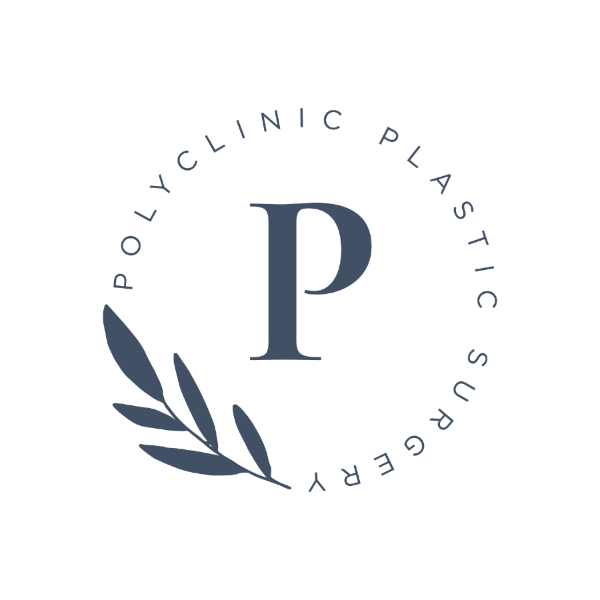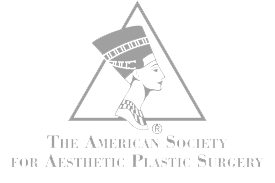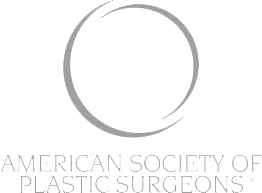
Gynecomastia

A male breast reduction is the most effective treatment for enlarged male breasts. Our team of expert board-certified surgeons can remove excess fat resulting in a firmer, more masculine chest.
"My day of surgery was splendid. Everything turned out better than expected. The team was honest, clear, and careful and everyone made me feel comfortable and secure. I love the results!"
Overview
Overview
What is Male Gynecomastia?
Gynecomastia can affect men of any body type and age, causing enlarged breast tissue, at times resembling women’s breasts. Gynecomastia can occur as a result of weight gain, hormones, certain drugs, or genes. This condition can affect self-confidence and body image.
Enlarged male breasts can either be gynecomastia or pseudo gynecomastia. Two types of tissue are found in breasts: fatty tissue and glandular tissue. Pseudogynecomastia is an excess of fatty tissue, which can be treated both surgically and non-surgically. Gynecomastia must be treated surgically.
Male gynecomastia surgery removes excess fat, skin, and tissue, helping to contour the male chest, leaving men with tighter upper bodies and a more proportional physique. The highly-experienced surgeons at Polyclinic Plastic Surgery use their surgical artistry to give you a natural, masculine chest. You can trust us to provide personalized, compassionate care.
Benefits
Benefits
What are the Benefits?
After gynecomastia surgery at Polyclinic Plastic Surgery in Seattle, you can expect:
- Improvement in body image and self-confidence
- A more masculine appearance
- Better-fitting clothing
Candidates
Who is the Ideal Candidate?
Generally, any male who is bothered by their enlarged or sagging breast tissue is a candidate for gynecomastia surgery. The ideal candidate is physically healthy, a non-smoker, and is of stable weight.
Recovery
Recovery
What Can I Expect from Recovery?
After gynecomastia surgery, you can expect soreness, bruising, and swelling. Your surgeon will prescribe pain medication to help ease the discomfort. You will wear a compression garment over your chest to decrease swelling and fluid retention and promote healing. Your surgeon will follow your progress, and you may resume regular, everyday activity once your chest is healed, typically within 4-6 weeks.
Options
What Type of Techniques are Available?
Options 1 headline
Lorem ipsum dolor sit amet, consectetur adipiscing elit, sed do eiusmod tempor incididunt ut labore et dolore magna aliqua.
What are the various techniques available?
OPTIONS 2 HEADLINE
Faq's
Frequently Asked Questions
Congratulations! When it comes to first-time pregnancy, there are plenty of lifestyle adjustments to make, physical changes to get acquainted with and extremely exciting milestones ahead for both you and your future baby! Thankfully, all things considered, you can comfortably scratch “having breast implants” from any list of concerns or at least two reasons: Getting pregnant, giving birth, and breastfeeding with breast implants are all entirely possible and all considered totally safe for both the baby and the mother. Secondly, if any changes were to occur that affected the cosmetic appearance of the breasts or the implants, they are quickly correctable after breastfeeding, at the earliest possible opportunity. These changes might include changes to the position of the implants in relation to the now-developed breasts, or to the firmness of your breasts. In most cases, the implants.
SAFETY OF BREAST IMPLANTS DURING PREGNANCY
Breast augmentation patients planning to bear children often wonder if pregnancy will affect or even damage their implants. While pregnancy, childbirth and breastfeeding do cause the body to undergo tremendous natural shifts, every woman will experience these changes differently, and the changes often differ even from pregnancy to pregnancy for the same mother. Swelling of the breasts during pregnancy is natural, as is the volume loss that occurs after breastfeeding. For some, these fluctuations are dramatic while for others they are subtle.
In either case, the breast implants are not damaged and their structure and integrity hold throughout this exciting and life-changing time. The breasts play a central role in the transformative biological process of giving birth and as they pass through the many phases involved, the implants themselves are not affected or compromised.

How we deliver care matters

Thank you all so much for the care, tenderness, and value you place on each patient. Your patience and graciousness have touched my life and means so much. I can’t thank you enough. You are each a gift to your profession.
Everything was better than expected. The day of surgery was splendid. Everyone made me feel comfortable and secure. Honest, clear, careful and I love the results.
Everyone from the receptionist to nursing to the surgeon was all wonderful. The procedure was quick and easy and the view is beautiful.
Great first visit for gathering information on a possible procedure. In the reception area, I was greeted by friendly, helpful staff. They were very understanding when I arrived several minutes late due to the Seattle area traffic challenge! My questions prior to seeing the doctor were answered completely and professionally.
There is absolutely nothing that could have been done better. Dr. Nadeau and her staff took exemplary and gentle care of me from start to finish. I can't say enough good things about them. Dr. Nadeau is a true artist at what she does.
All staff members were kind, friendly and very helpful! Dr. Welk was very professional, knowledgeable and was able to answer all my questions!
"Dr. Nadeau is very compassionate, caring and understanding. She has always spent plenty of time with me and provides me with all the information I need to make any needed decisions. I am very fortunate to have her as part of my team of physicians to get me through my cancer journey. The team she has to support her are very professional, compassionate and helpful."
Absolutely the best physician that I have ever met. He is 200% caring and is an excellent surgeon. He treats you like a family member.
I see Dr. Nadeau for my filler and Botox. She is an absolute artist when it comes to filler. She will take her time assessing your face and listen to your needs and concerns while also giving her honest input and advice to steer you in the right direction. I was certain that I wanted fuller lips, but we ended up treating my cheeks and under-eyes and it has made all the difference. When it com(...)
I've had two surgeries done by Dr. Nadeau - an upper eyelid blepharoplasty, and a breast implant revision, and I feel beyond lucky that I chose Dr. Nadeau to do these procedures. Having plastic surgery requires such a high level of trust in your surgeon, and from the moment that I walked into her office, I felt completely secure that Dr. Nadeau and her team had the highest professionalism and(...)
Dr. Nadeau took her time with me and made me feel comfortable and confident in my procedures (eye lift and reconstructive surgery due to the Moh's procedure) by explaining in depth what was happening, what to expect, and by answering all my questions thoroughly. I was impressed by her knowledge, kindness, and professionalism. There were no "surprises" for me because she was honest in what to (...)
Dr. Kyllo was referred to me as the very best in plastic surgery. He was great!!! My last post-op I discussed with him a concern regarding my breast and he evaluated me and requested additional testing. I did just that and Thank God I did. He caught my breast cancer early, not because of obvious lump, but simply his expertise. He worked with my surgeon from another hospital, as they made a pl(...)
I came to see Dr. Kyllo within days after I was diagnosed with breast cancer. I had been told by word of mouth, he was a perfectionist in his field, and genuinely nice. Dr. Kyllo did reconstructive surgery for my bilateral mastectomy and my results look great. In addition, I had liposuction on my neck as well as an endoscopic eyebrow lift. I am extremely happy with those results too, even tou(...)
Dr. Kyllo is amazing! He is very kind, gentle and funny. I'm a pretty shy person and he always made me feel welcome and helped me to open up and addressed my every need. He is an artist in the truest respect, and knows what limits to take while keeping his patients needs in mind so that the result is both stunning and natural. His office is very clean and professional and inviting and his sta(...)
Everything went wonderfully. I'm very happy with the results and Dr. Paige is awesome and his entire staff, everybody from the financial planner to the nurses to the surgical staff - everybody was wonderful. Thank you guys very much.
Dr. Beshlian is absolutely the best physician that I have ever met. He is 200% caring and is an excellent surgeon. He treats you like a family member.
"Dr. Cindy Wei has been wonderful in helping me save my leg from amputation. Her excellent surgical skills and transparency in communicating with me and her great after surgery care makes me respect her education, training and experience. I recommend her to anyone with a complex wound or other surgery needs."
I'm truly grateful that I found Haley Trudeau, LME and Dr. Nadeau and I'm so glad that I had the Geneveve treatment. The Geneveve treatment has restored a level of intimacy that my husband and I had before and this makes us both very happy.
I had reached the post-menopausal stage in my life and sex had become more and more painful to the point when my husband and I had to stop having sex.(...)
"The entire team is excellent!!! They gave us the encouragement to continue moving forward with my breast reconstruction."
"Honestly, the Polyclinic is by far the BEST healthcare I have ever received! Dr. Cindy Wei, her staff and the Polyclinic are of the highest caliber of professional and personal humanity. Thank you!"
"You exceeded my expectations with your thoroughness and teamwork amongst all professionals."
"I refer Dr. Nadeau to anyone I know. People do not know enough about the benefits from breast reduction. She was awesome from the first appointment and I got approved right away. Dr. Nadeau is an expert. Her team is awesome. You girls rock! High fives and my deep respect!"
"Dr. Nadeau explained each step as she went. I knew what was happening in the moment. It was a very good experience."
"My expectations have always been high with this medical staff and they continue to excel in all areas. Dr. Welk and his staff go above and beyond all expectations. I cannot praise them enough!"
"Your customer service is top notch!!! Jennifer was courteous in scheduling an appointment with Dr. Paige and his nurse was so patient and explained everything so well. Thank you - I am so excited about my results."
"You exceeded my expectations with your courtesy and competence. I had very little anesthesia after-effects and I have no more shoulder, neck & arm pain. My posture and spine alignment has already improved. I wish I had done this years ago."
"Sue Harrington is the best nurse EVER. Dr. Kyllo was so kind, caring and available. You exceeded my expectations in every area. This was the best medical experience of my life. Thank you!"
"Dr. Beshlian and his team are very professional and nice. You are doing very well in how you provide care. It was a very good experience."
"The care I received was outstanding. I am so impressed, there is no areas to approve upon. Dr. Welk and his staff greatly exceeded every expectation. He is meticulous, brilliant, professional and tremendously kind. I have 100% trust in him. I highly recommend Dr. Welk, his staff and this facility. I am grateful for the care he has given me."
"Dr. Kyllo is a reminder of where I came from. It seems so long ago that I was in constant pain I forgot how fortunate I was to be referred to him. He is such a blessing."
"Thank you for how kind Dr. Kyllo and his staff have been. I feel like "one of the lucky ones", with such a supportive community and an incredible surgeon. To walk into the office at my first consultation and feel warmly welcomed and accepted without hesitation was incredibly validating. I feel deep gratitude for the people who have made lasting positive impacts on me - including Dr. Kyllo. I(...)
"Remembering that people come in and out of our lives for some times just a moment, I want to thank Dr. Kyllo for being in "that moment". Dr. Kyllo and his team are caring, kind and thoughtful. I was happy to be the recipient of his talents, care and especially his positive nature. Thank you for putting an "ear to ear" smile back on my face and for treating me with dignity."
"Many thanks to Dr. Kyllo for his hard work and dedication. I feel very fortunate to be placed in his excellent care. He is not only a highly skilled surgeon, but a thoughtful and caring physician. I appreciate his compassion, empathy, communication, approachability and assurance. Those qualities have made my journey a very positive experience which makes all the difference in the world."
"Thank you so much for going above and beyond with providing care and support to me and my loved ones before, during and after my surgery. The results and recovery has far exceeded my expectation, thanks mostly to your expertise and level of care. I've never felt so awake and free within my own body. Your care has meant so much to me and my family."
"Words alone cannot express my gratitude for the care, patience and expertise I experienced with Dr. Cindy Wei. I have been treated with such a high level of respect, dignity and clarification of medical terms/procedures into terms I could understand. I am eternally grateful and thankful for the great care I received from Dr. Wei and her Patient Care Coordinator, Ha Hahn who worked closely (...)
"I am so grateful to all of you working together to save my life. My diagnosis of angiosarcoma was a very frightening experience. Yet I was so blessed to undergo a timely surgery for an aggressive cancer. I was the recipient of his excellent surgical skills, expertise and great care by Dr. Paige and his staff. Also, ample time for all questions and concerns was available to me in the office p(...)
"Dr. Welk is meticulous, brilliant, professional, and tremendously kind. I have 100% trust in him. He and his staff exceeded every expectation and I feel more confident than ever! I am very grateful he was my surgeon."
"The impact of my breast reduction has been life-changing. I am so glad I chose Dr. Nadeau as my surgeon. She is a true artist! She and her team have truly set the standard for what patient-centered care should be."
"Dr. Nadeau gave me my life back with her surgical skills and I feel so blessed when I look in the mirror now. I feel younger and more alive, like a whole new person. Having my surgery done with her will always be one of the best things I have ever done for myself."
"There is no way to put into words just how much Dr. Nadeau’s work positively impacts her patients’ lives. She did an incredible job with my neck lift and lower facelift and I have never felt more confident. I am so grateful that she was my surgeon."
"I am so grateful for Dr. Wei and for the excellent outcome she achieved with my breast reconstruction. I finally look and feel like myself again and that has been the silver lining in an otherwise difficult experience treating my breast cancer."
"I am so happy with my results. Dr. Wei is amazingly skilled, kind, and compassionate. I have never looked better and my confidence is through the roof!"
"Darcy is highly regarded as one of Seattle’s most experienced aesthetic injectors. She truly understands facial anatomy, and as a result, I leave each appointment looking like the very best version of ME; rested, refreshed, and rejuvenated."
"I’ve been getting Botox and fillers from Darcy for years and I would not trust anyone else with my face. She’s taken years off my appearance and I love her calm, reassuring personality."
"I appreciate Darcy’s in-depth knowledge and expertise. When it comes to facial fillers she is a true artist!"
"Brigid is the best injector I have ever used! It is clear she is passionate about her work and committed to providing beautiful and natural results. I am so grateful I was referred to her."
"Brigid is truly an artist as well as a perfectionist when it comes to facial fillers. I left looking ten years younger and could not be happier with my results."
"I love that Brigid leaves me looking youthful and vibrant but never overdone. She truly understands facial anatomy and her results are always beautiful! I only wish I would have found her sooner!"
"Dr. Paige did a beautiful job on my breast reconstruction. I finally feel whole again! I am so thankful for his knowledge and skill. He is a true artist."
"Having breasts that look and feel natural is fantastic and has been a big boost to my confidence. Dr. Paige did such a great job that even my oncologist thought my non-cancer breast was real!"
"I am so grateful that Dr. Liu was my surgeon. If I were to describe my experience as a fairytale I would be Cinderella and Dr. Liu would be my fairy-God surgeon."
"Dr. Liu is my Michelangelo. I was a beautiful piece of marble before but he has carved me into literal walking art. Dr. Liu forever changed my life for the better and I will forever be his hype queen!"
"Since having FFS surgery I no longer feel gender dysphoria. My body, mind, and spirit are finally aligned. I wake up every day now feeling confident about how I look thanks to Dr. Liu. He is truly a surgical artist that practices patient-centered care."








